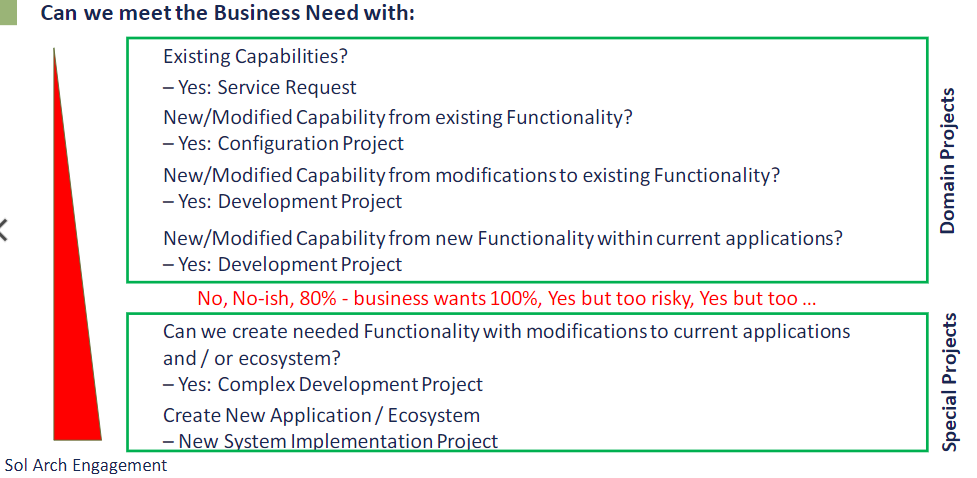Submitted by Jennie Franke
The Solution Architect team in Enterprise Applications is growing, and has an opening for a Solution Architect.
If you or someone you know is interested, please have them apply in Workday.
If you want to know a bit more about what this team and position are responsible for, here’s a brief summary from Jason Clevenger, our lead IT Architect in EA.
What is Solution Architecture?
Our Solution Architect team compliments our technical architect function by balancing a strategic focus (which is typically delivered through enterprise architecture) with the technical focus (delivered through our EA Technical Architect team). At the same time, our architects have to be aware of business-led change from our customer groups as well as IT-led changes. Taking these various sources of direction and guidelines, and applying them to deliver business value with a bias towards reducing complexity and simplifying the environment is the goal of Solution Architecture.
When can a Solution Architect Help?
Not all changes that EA delivers require a solution architect. There are various considerations the team evaluates.

What is Solution Architecture responsible for?
But when a Solution Architect is required, they help the team identify an Appropriate Solution – once again balancing competing forces, such as*:
- Enterprise Architecture Constraints: strategy and roadmaps, enterprise standards, target state architecture
- Business Constraints: business requirements, company culture, conflicting goals
- Project Constraints: timeline, budget, resource skills
- Technology Constraints: legacy systems, existing system issues
* https://jelvix.com/blog/what-is-solution-architect
How does Solution Architecture inform implementation?
Solution architecture is most engaged during project envisioning, when they identify an appropriate solution to the business need. This is captured in a Solution Options and Recommendations.
Once a direction is chosen, the architect creates a more detailed Solution Approach to inform project planning.
Lastly, once requirements are defined, a Solution Design is created to provide guidance for the implementation of the solution.